The metro ticket joins the poinçonneur des Lilas…
Le saviez-vous ?
Mise à jour le 15/02/2024
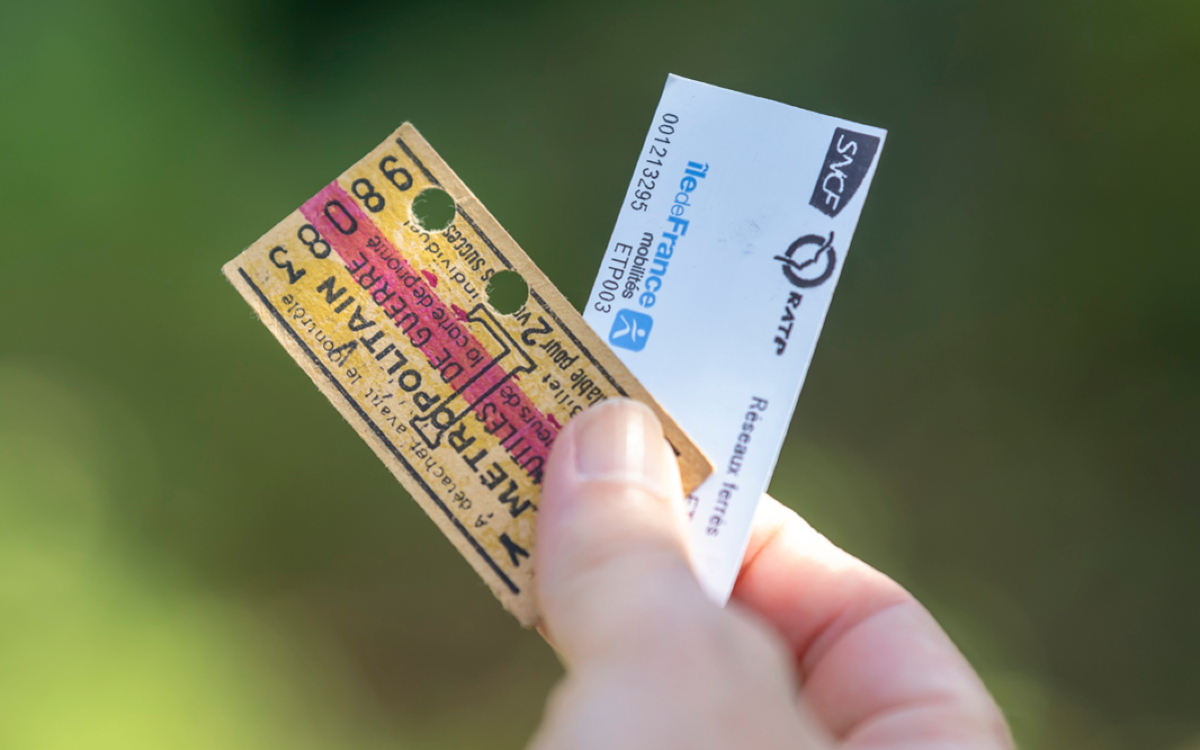
Sommaire
As of September 21, it will no longer be possible to buy cardboard books of t+ tickets at ticket machines and ticket offices throughout the RATP network. Before we bid a gradual farewell to the "ticket choc", here's a look back at its history… and a word of condolence to all esitériophiles!
The gradual disappearance of the cardboard metro ticket has been launched for 2021. Why? Because every year, nearly 5 million tickets are demagnetized because of their proximity to keys or coins; because, according to RATP, on average, 1 in 10 tickets in a booklet is unused because it is lost, damaged or forgotten; and because a ticket thrown on the ground takes nearly two years to decompose. Above all, the switch to contactless technology means greater speed and health and safety.
By 2025, this small piece of cardboard measuring 6.5 by 3 centimetres - which costs 2.10 euros each - will disappear completely.
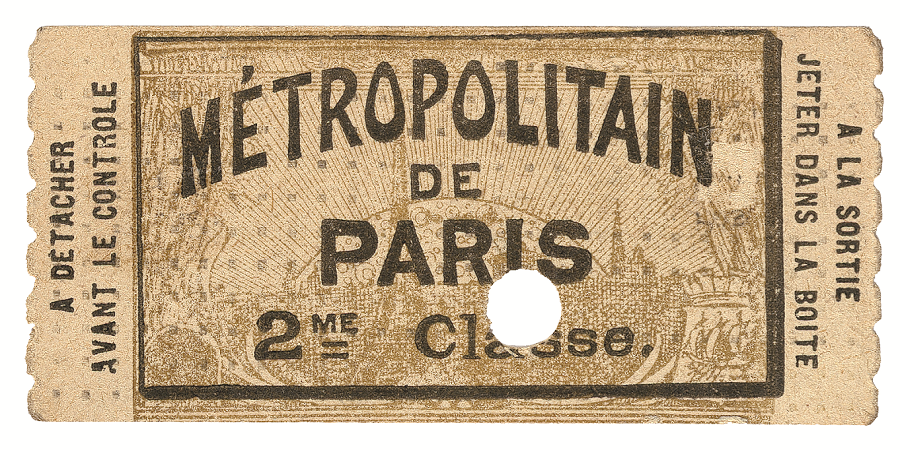
2nd class metro ticket 1903
Crédit photo :
Collection Grégoire Thonnat
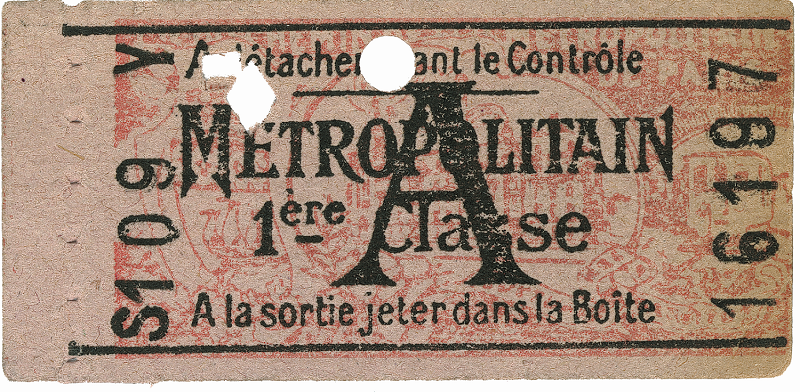
Metro ticket 1st class fare A 1925
Crédit photo :
Collection Grégoire Thonnat
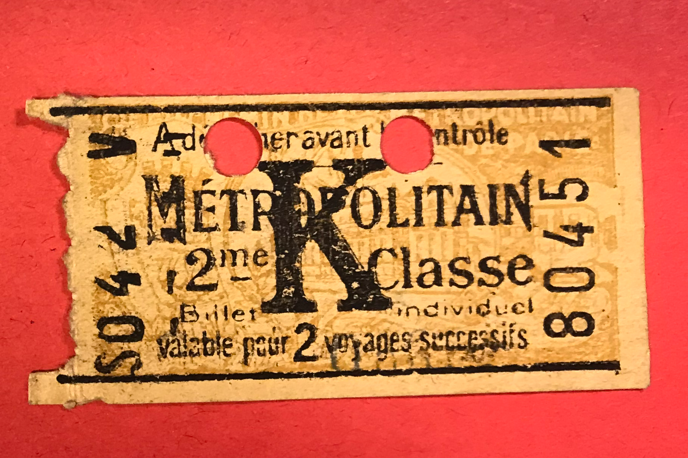
Subway ticket valid for two journeys - 1945
Crédit photo :
Archives de Paris
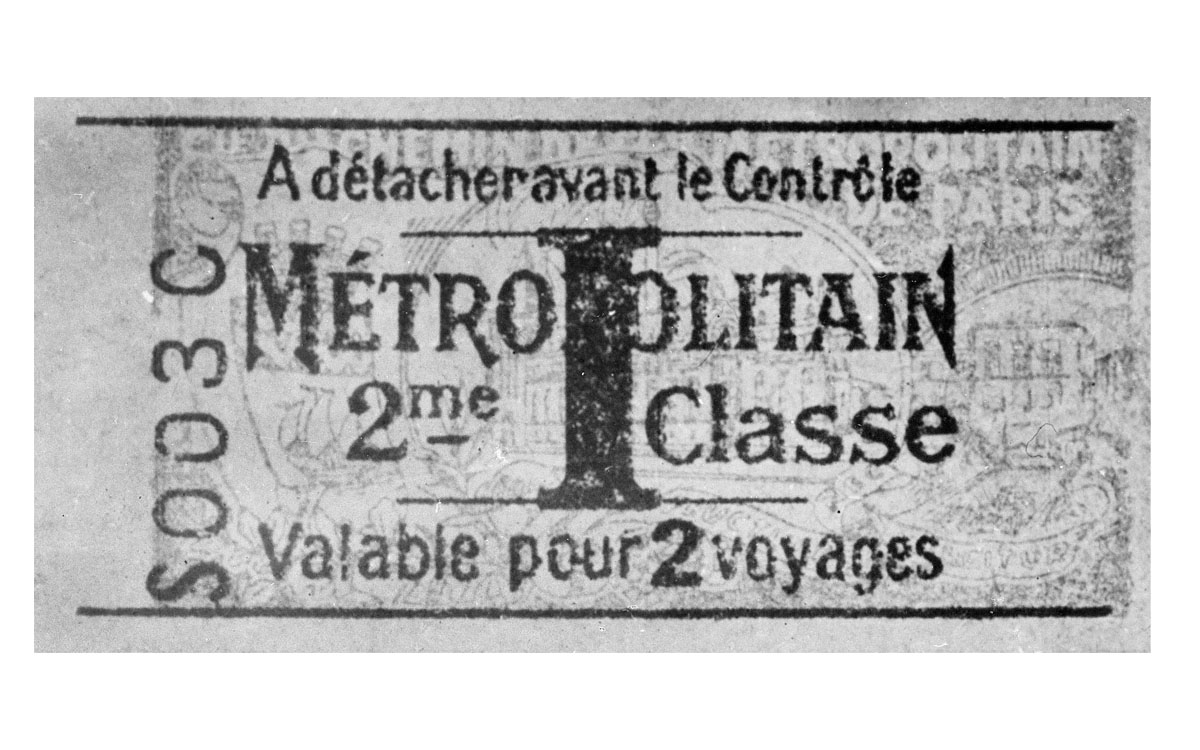
Second-class Paris metro ticket. March 1943.
Crédit photo :
LAPI / Roger-Viollet
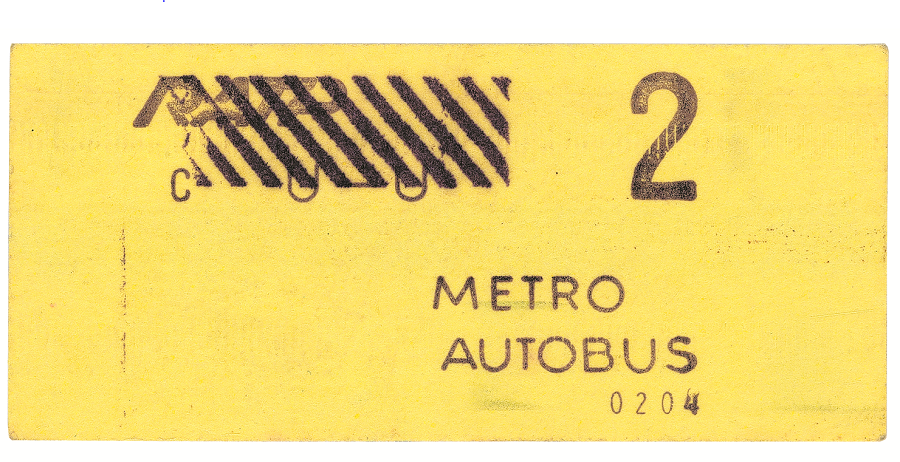
Metro ticket 2nd class 1978
Crédit photo :
Collection Grégoire Thonnat
He was born in 1900
The first Paris metro ticket was issued on July 19, 1900 for the inauguration of Line 1, which linked Porte Maillot to Porte de Vincennes in 30 minutes.
That day, 30,000 tickets (5.7 by 3 cm) were sold.
Each fare now has its own color: pink for first class, at 25 centimes (old francs) each way, and cream for second class, at 20 centimes.
Passengers must have their tickets punched by a ticket inspector at the platform entrance. A second agent, stationed in the first-class carriages, checks the tickets using a pair of tongs with an imprint specific to each line.
Its wide distribution gave advertisers of the time the idea of using the metro ticket as an advertising medium.
A pricing alphabet
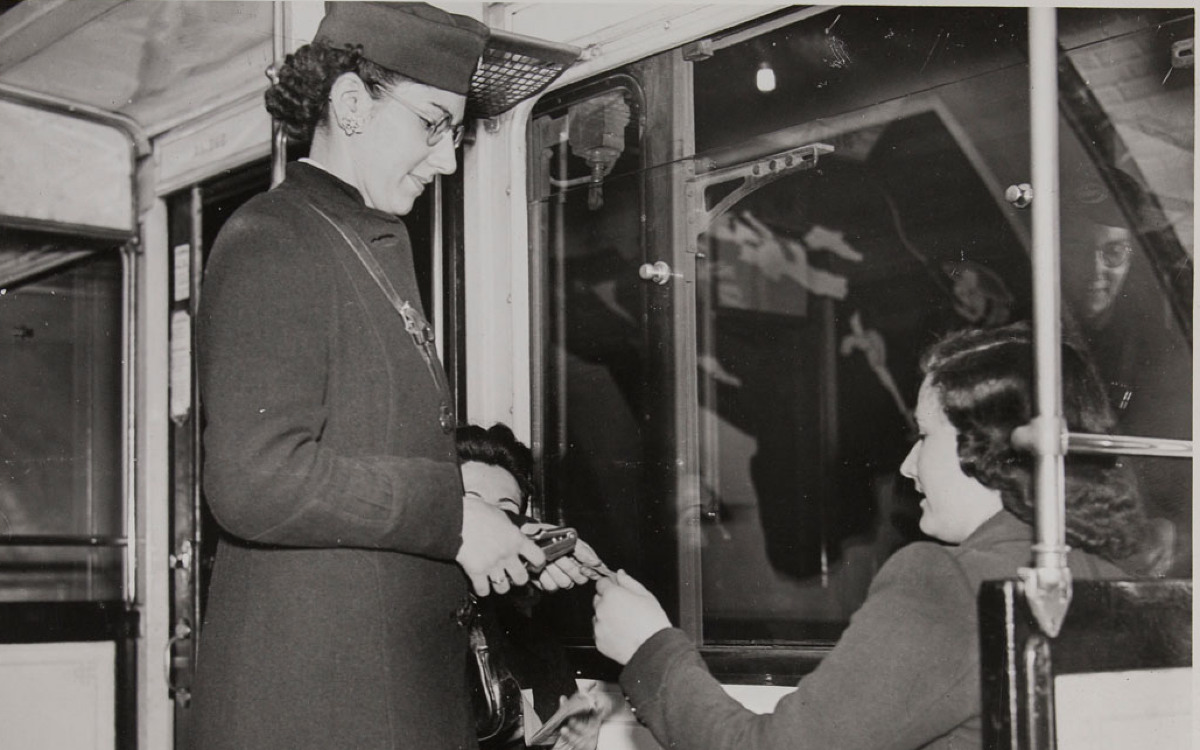
Paris Metro: checking 1st class tickets. Photograph by Compagnie du métro parisien. Gelatino silver bromide print. 1943.
Crédit photo :
Compagnie du Métro Parisien / Musée Carnavalet / Roger-Viollet
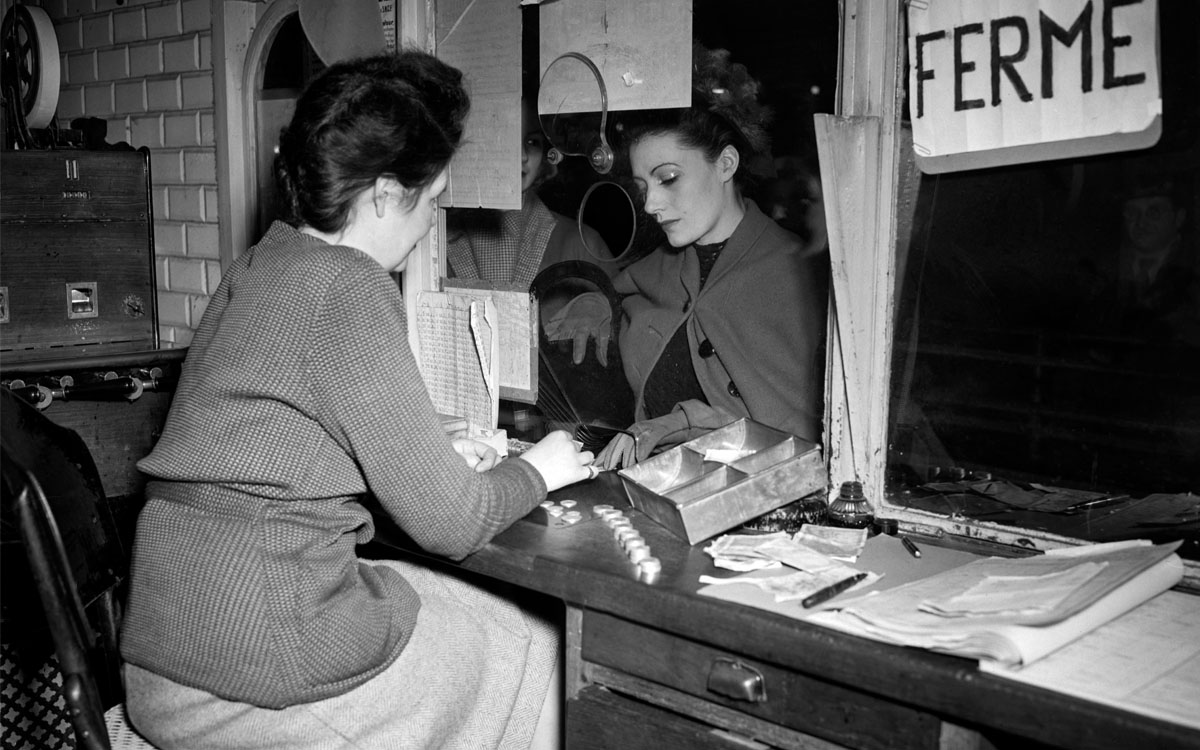
Cash box for metro tickets, Paris, January 1947.
Crédit photo :
Roger-Viollet / Roger-Viollet
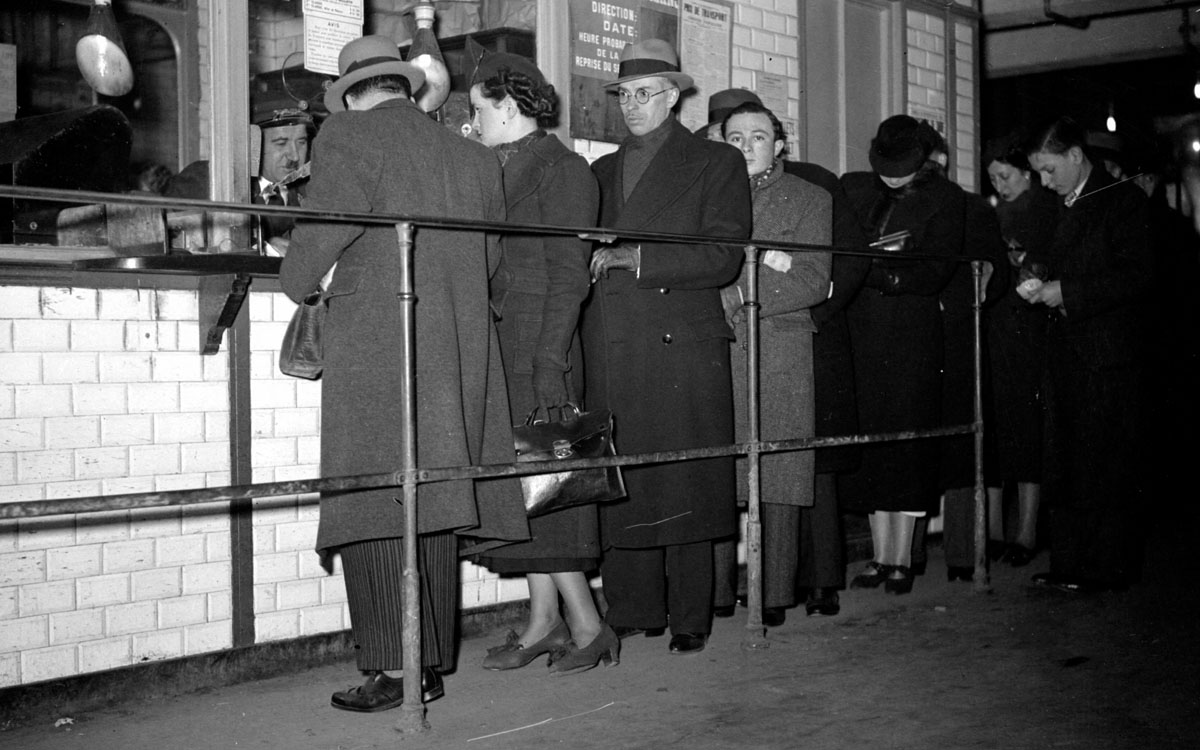
Line-up at the metro ticket office. Paris, circa 1938.
Crédit photo :
LAPI / Roger-Viollet
After the First World War, the metro fare increased and, from 1925, a "fare alphabet" was introduced: each change in the fare system was represented by a letter: A, B, C, D, etc. It was also at this time that the forerunner of the Navigo card was introduced, the "carte hebdomadaire de travail", a ticket valid for twelve journeys at a price of 10 francs.
Under pressure from veterans' associations from the Great War, the Compagnie du chemin de fer métropolitain de Paris, forerunner of the RATP, created a special "war-disabled" fare when it switched to fare D in 1930.
It wasn't until 1948 that large families also benefited from a reduced fare.
1937: the 1 franc threshold is reached

Metro, Denfert-Rochereau station. Distribution of weekly cards. January 6, 1967.
Crédit photo :
Lalanne, Léon / Fonds France-Soir / BHVP / Roger-Viollet
The symbolic threshold of 1 franc (old!) for a second-class ticket was reached in 1937, the year of the Universal Exhibition, when the F fare was introduced. In 1939, the price of a ticket gave access to a network of 14 lines, covering 160 kilometers of track. The restrictions imposed during the German Occupation also applied to metro tickets. In order to reduce the volume of paper needed for ticket production, the carnets of ten tickets were replaced by carnets of five, each "valid for two journeys".
In 1951, we switched to the letter S (without using the letter Q, which was not considered politically correct, and the letter R, which was too similar to P and encouraged fraud), and fares were increased. A second-class metro ticket was now sold for 20 francs, and a first-class ticket for 30 francs.
In 1958, the V fare was introduced in two new colors: havana for the second class and green for the first.
And the magnetic tape appears!
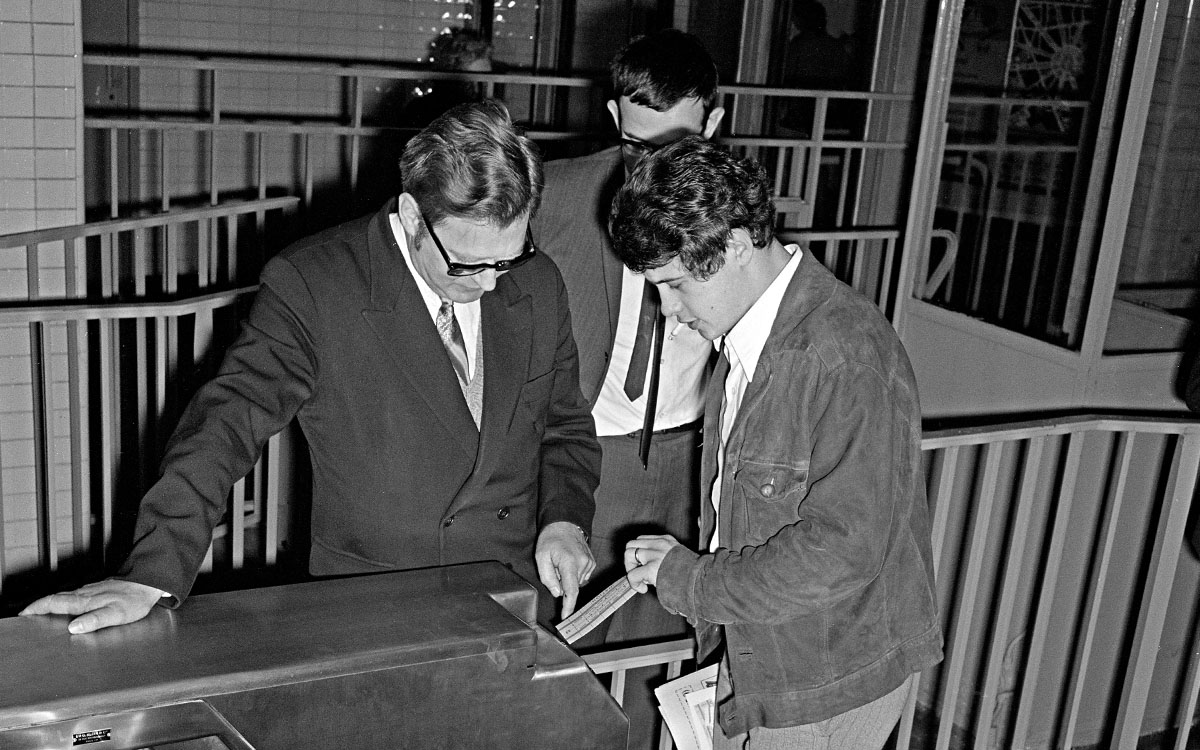
First tests of the automatic gate at Nation station. April 1968.
Crédit photo :
Lalanne, Léon / Fonds France-Soir / BHVP / Roger-Viollet
In October 1973, after several years of experimentation, the magnetic stripe on the back of tickets (now lemon yellow) was introduced across the board. Automatic gantries and turnstiles were installed in all stations to enable passengers to stamp their tickets themselves.
In the same year, the tariff alphabet principle disappeared. Advertisements, too, could no longer be "crossed out" by the magnetic strip.
Vidéo Youtube
Two years later, the Carte Orange - a monthly pass with unlimited access to Paris public transport - revolutionized travel in the capital. By 1976, 11 million coupons had been sold. Given its success, the card was gradually extended to annual, weekly and daily versions.
To celebrate the Bicentenary of the French Revolution, artist Jean-Michel Folon has been invited to decorate metro tickets with birds, an allegory of the Republican motto.
First-class fares were abolished on July 30, 1991 for the metro - not until 1999 for the RER.
When the visual identity changes, the ticket turns green.
Towards dematerialization
The final stage in the transformation of the metro ticket began in 2001 with the gradual introduction of the Navigo pass.
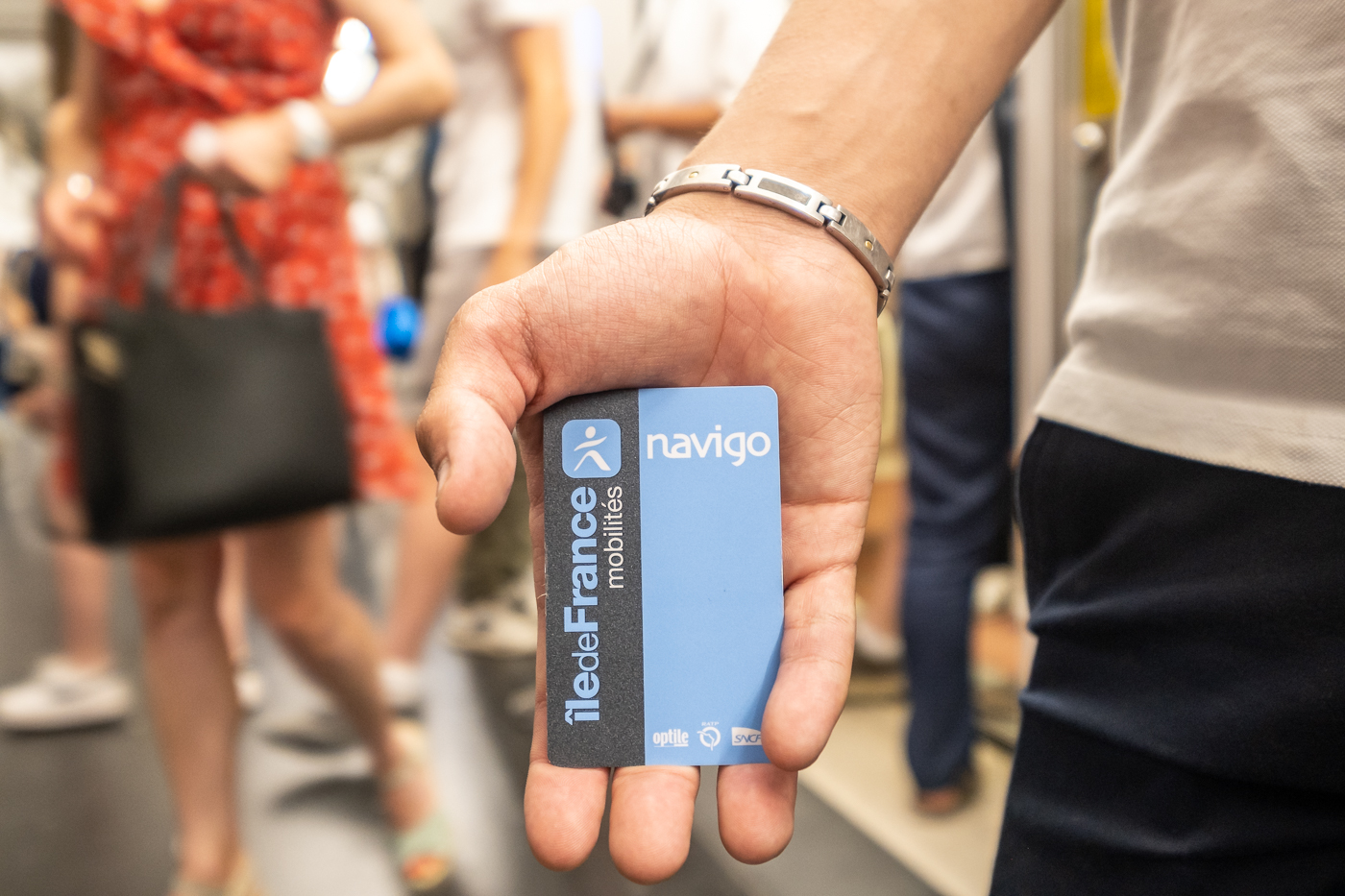
Pass Navigo jeunes Ile de France Mobilités
Crédit photo :
Clément Dorval / Ville de Paris
The t ticket was introduced in January 2003. Purple in color, it can now be used on suburban bus networks managed by one of the 80 private transporters grouped together in the OPTILE organization. This color won't last long, however, as it mixes with the maculation during stamping, causing disputes during checks.
In 2006, the Île-de-France region validated the introduction of a multimodal ticket valid for an hour and a half on all forms of transport (metro, RER, bus, suburban trains, etc.). This is the t+ ticket.
Condolences to esoteriophiles
In 2019, the metro ticket comes to an end with the introduction of a white, redesigned ticket, which promises to be the last before the end of cardboard tickets. By then, 550 million tickets will have been sold each year.
Esitériophiles - people who collect transport tickets- will gradually have to hang up their passion. In a few years' time, the younger generation will no longer know what a "metro ticket" is, and it will become a subject for archives, like the punchmen in their day…
Vidéo Youtube
What are the alternatives?
RATP has listed the different solutions available, whether you're a regular or occasional user of the bus and train network.
Let's preserve the memory of the ticket together!
The Archives de Paris are launching a collection of metro tickets from 1900 to the present day, in order to preserve the memory of this everyday Parisian object. If you would like to donate used or blank tickets, old or new.
Contact Florian Husson, archivist in charge of this collection: [florian.husson puis paris.fr après le signe @]sybevna.uhffba@cnevf.se[florian.husson puis paris.fr après le signe @]
Contact Florian Husson, archivist in charge of this collection: [florian.husson puis paris.fr après le signe @]sybevna.uhffba@cnevf.se[florian.husson puis paris.fr après le signe @]
Three questions for Grégoire Thonnat, author of "Petite histoire du ticket de métro parisien".
Grégoire Thonnat is so attached to the metro ticket that he has written a book full of images and anecdotes about this little cardboard rectangle, each copy of which is unique in the world…
How does the history of the Paris metro ticket different from that of other metros?
G. T.: First of all, because it's Paris! In the 123 years of its existence, the metro ticket has become as much an icon of Parisian imagery as the baguette or the bateaux-mouches. For many French people and foreigners alike, it's a Proust's madeleine, an object we'll find as a bookmark in our old books… We know, for example, that Bill Clinton always kept the tickets he used when he was in Paris. The metro ticket plays an important role in literary works and films such as Henri-Georges Clouzot's Le salaire de la peur.
At the time of the Picasso estate, complete boxes of used subway tickets were found… We'll never know if he was a collector! I even know a big boss who collects them to the point of having a dedicated room in his house.
Finally, for each and every one of us, it is an object with a strong memorial value: this ticket is a sesame to freedom!
Is that why you dedicated a book to him?
Yes, there are 1,000 stories to tell! I grew up in Paris and when I went back to 6th grade, my father bought me my first orange card with the September coupon, which I've always kept and which was exhibited at Metro ticket Expo at the Musée des Arts et Métiers in 2011!

Crédit photo :
Collection Grégoire Thonnat
Writing this book has given me the opportunity to make some extraordinary encounters, like when I interviewed Michèle Morgan, who spoke of her love of the metro, or the Klarsfeld couple, who fell in love at the Porte de Saint-Cloud station.
When my book came out in 2011, I noticed the public's fascination with this object. Editions Télémaque have published three updated editions. The international press regularly asks me to talk about the metro ticket, and I'm preparing a documentary for British television. The subject is inexhaustible!
But today, we're preparing preparing for its demise…
It was inevitable, even if its demise was repeatedly announced. It's not easy, because public transport users are attached to it. It took several communication campaigns to switch from the carte orange coupon to the Navigo…. pass.
Cities like Beijing and Lille went paperless a long time ago. Paris is set to follow suit.
But, as the French kept their franc bills and coins when they switched to the euro, I have no doubt that they will treasure this little piece of paper that has been part of their daily lives for so long. Even if it only lasts for an hour and a half, it will never disappear completely.
Read more
Find out all about Parisian heritage…
Default Confirmation Text
Settings Text Html
Settings Text Html
Votre avis nous intéresse !
Ces informations vous ont-elles été utiles ?
Attention : nous ne pouvons pas vous répondre par ce biais (n'incluez pas d'information personnelle).
Si vous avez une question, souhaitez un suivi ou avez besoin d'assistance : contactez la Ville ici.

